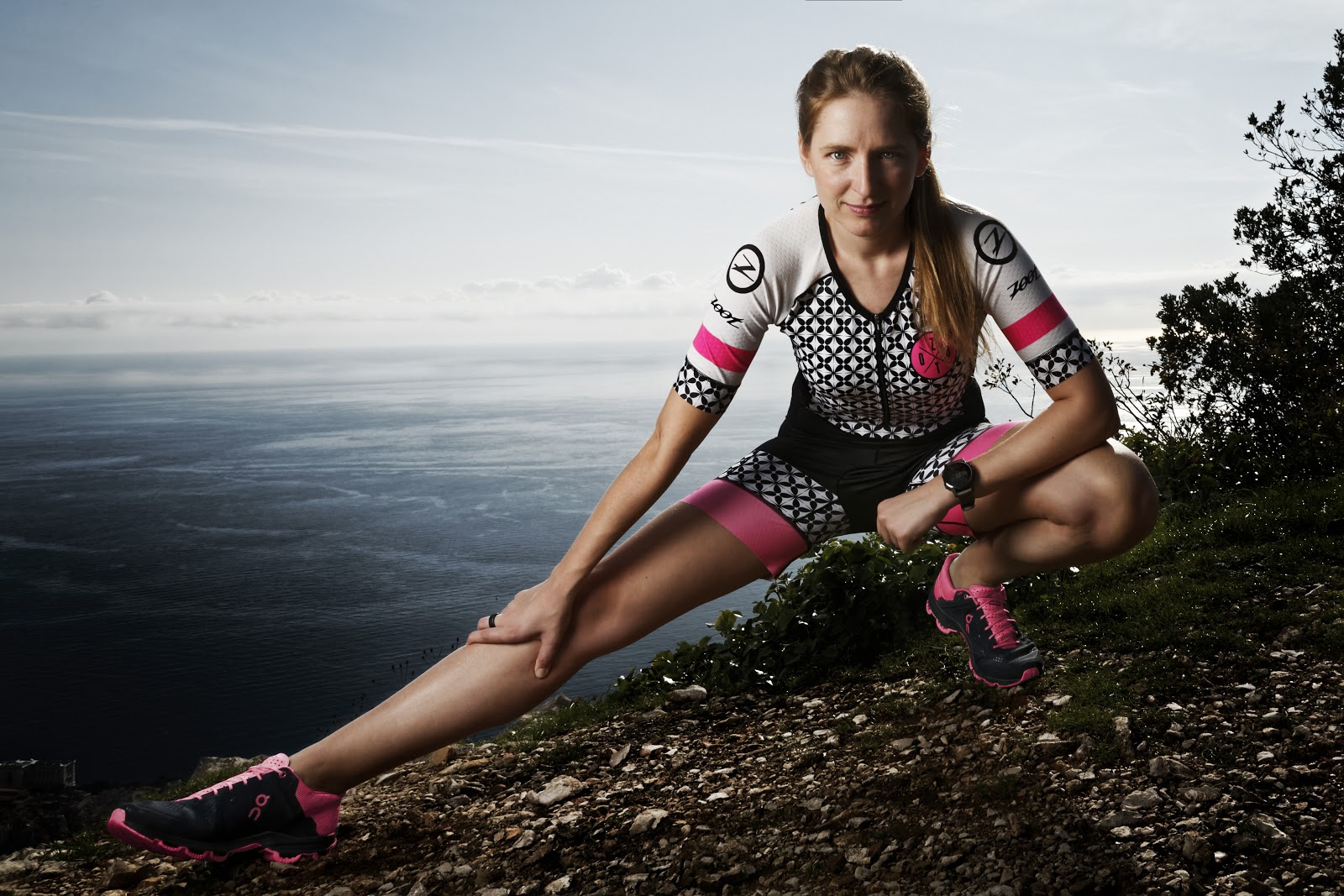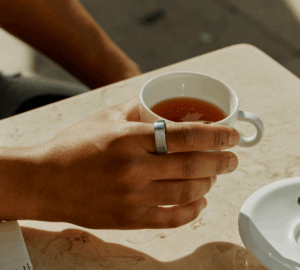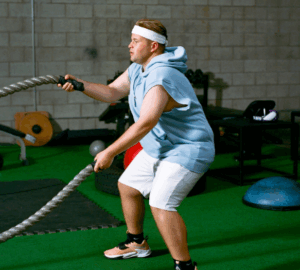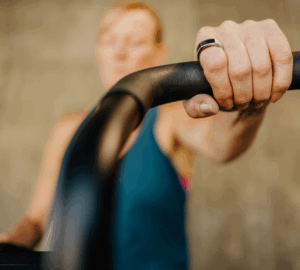Who: Hélène Guillaume, 36, Portugal
Surprising Oura insight: When my Oura App tells me I’ve had ~25% deep sleep and ~25% REM, I know my performance and recovery will be optimal.
Helene is an athlete and the founder of Wild.AI, an app that helps women train, fuel, and recover based on their menstrual cycle or menopause symptoms. Prior to founding Wild.AI, she worked as a quantitative hedge fund and management consultant in artificial intelligence. She has always been an athlete — semi-professional rugby, competitive triathlons, ultra-marathons, swimming, and most recently, surfing.
Wild.AI was created on the belief that having data and information on how your body works allows you to work alongside it — to “go wild” and reach new limits. Originally from France, Helene now lives in Portugal where she can be found outside, when she’s not working on Wild.AI.
Learn how to integrate your Oura App with Wild.AI here.
What led you to Oura?
Working in tech, a huge part of my job is to track and understand data sets. So I’ve always been interested in tracking. I’ve been using Oura for four years, mainly to track my sleep and exercise recovery. I know that a huge part of being active is recovery, so I got very interested in that.
We often view metrics — resting heart rate (RHR), heart rate variability (HRV), REM sleep, deep sleep — as incomprehensible numbers. Oura helped me actually understand how these metrics apply to how I’m feeling and performing. When I open up the app in the morning, it’s like a little challenge: how can I get my RHR down?
READ MORE: What Is the Average Resting Heart Rate?
What inspired you to create Wild.AI?
Growing up I was a tomboy. My biggest insecurity was being a girl because it was less cool — less fast, less strong, less interesting, which is how it’s portrayed in the media. When I realized that my insecurity could be my purpose, it was amazing. I want to feel great about being a woman and having a female body.
How does Wild.AI work?
Wild.AI uses multiple datasets — subjective and objective — to provide recommendations to reach peak performance. Base data, like the last day of your most recent period, will be used with subjective data, like how well you slept. This is where Oura comes in.
Oura data is added to the app to offer more accurate and useful recommendations about how you should train, recover, and eat. The goal is to help women work with their bodies rather than against them.
What’s the benefit of aligning your training with your menstrual cycle?
It’s a way to optimize your training so that you can improve your overall performance. If I compete on my period or ovulation day, there isn’t a drastic impact on my performance in the competition. But optimizing my workouts around my cycle helps my body get stronger and in a prime state for when I do compete, regardless of where I’m at in my cycle.
How would you structure your workouts pre-baby throughout different phases of your cycle?
First of all, every woman is slightly different. But typically, ovulation, the middle point of your cycle, is a time where you can start increasing your load on endurance training. Ovulation is the prime time to do the hardest workouts.
As I go towards the end of the menstrual cycle, I decrease the endurance training and long workouts. I opt for things that require more stabilization or technique — things I’m personally less good at — like yoga or weightlifting.
Personally, I experience strong premenstrual syndrome (PMS) quite early in my cycle, around 10 days before my period. I feel very emotional and have less desire to do things. But if I work out, it makes me feel better. I try to do things that are very gentle with my body.
There’s a common misconception that when you have your period, you should do less exercise. But we found out in our data that by day three, lots of women feel very good. At this point, you can start to ramp up your activity to ovulation.
READ MORE: How to Align Your Training With Your Menstrual Cycle
What interesting insights have you noticed in the four years of using Oura?
My optimal state is a resting heart rate of 46-47, ~25% of deep sleep, and ~25% REM. If I have a really good deep sleep like this, my performance improves and my recovery is much better. So I feel less sore when I get a good night’s sleep, and I can train harder the next day.
My RHR is usually around 52-54. I’ve been challenging myself to get it down to 47, which for me is very difficult. I enjoy learning about that. It had never been above 60 unless I drank alcohol. And then I got pregnant. When you ovulate, your body temperature goes up, and if you get pregnant, it stays up. So my RHR was really high for most of my pregnancy.
READ MORE: What is the Average Resting Heart Rate for Oura Members?
What are your tips to reach that low of a resting heart rate?
My lowest RHR is 46, but I can only reach that if I have the perfect combination of behaviors. This is like my “secret recipe” for success:
- Morning Qi Gong and meditation practice
- Limiting exercise after 3pm
- Hydrating with 2.5 liters a day
- Fasting for 16 hours, starting at 3pm
- Practicing good sleep hygiene – no devices or strong lights 2 hours before bed
- Sticking to a 9:30pm bedtime and 7+ hours of sleep
- Cutting out alcohol
Of course this has become harder to achieve now that I have a baby.
READ MORE: How Alcohol Impacts Your Sleep
What has becoming a mom taught you about your health?
Getting back into activity postpartum is really interesting. If you’re breastfeeding and don’t have a period, you’re not able to track your energy levels as easily. My baby is six months old, so it’s also been interesting to see how my body is going back to a healthy baseline after giving birth.

Finally, why is it so important for you to do more research in the women’s health field?
Eighty percent of medical research is still done on male mice – and only 3% of sports budgets go to female sports. We are changing this. We’re doing extensive research on the female body and translating that into our app with the aim to provide products, services, and devices specifically for women.
The female body is ever-changing and incredibly interesting. We have been reading it the wrong way: we treated our bodies like men’s. We need the right tools to really understand female physiology.
READ MORE: How Your Menstrual Cycle Impacts Your Entire Body
What’s Your Oura Story?
Everyone’s story is unique, and we’d love to hear yours. Share your story here.




